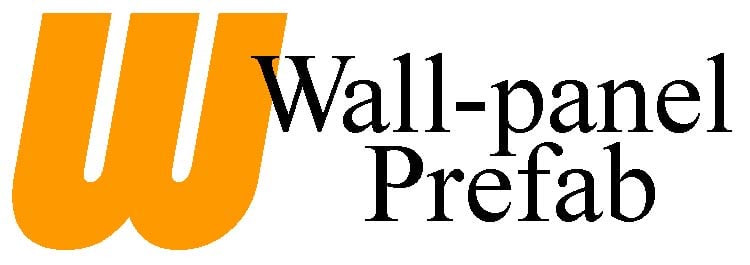Rethinking Post-Disaster Housing: Rapid Rebuilding with Prefabrication
Natural disasters have become increasingly prevalent, leaving communities devastated and displaced. The immediate response often involves mass congregate shelters, providing temporary relief. However, these shelters are not sustainable solutions for the long-term. It's time to rethink post-disaster housing and explore innovative approaches to rapid rebuilding. One such approach is the use of prefabrication, specifically cold-formed steel framing systems, which offer a cost-effective and efficient solution to rebuilding communities after natural disasters like hurricanes, tornadoes, earthquakes, or wildfires.
The Inequities of Post-Disaster Housing
Before we delve into the benefits of prefabrication, it is crucial to understand the issues with the current post-disaster housing system. Displaced individuals have diverse needs that are not met by a "one size fits all" solution. Marginalized and low-income communities are disproportionately affected by disasters, often due to the pitfalls of affordable housing. Affordable housing tends to be older, less maintained, and built in less desirable areas, making them more susceptible to damage. Rental companies may choose not to rebuild these properties, exacerbating the housing crisis for those affected. Additionally, individuals with precarious housing situations, such as seniors living on fixed incomes, are less likely to have adequate insurance coverage or access to financial support for rebuilding.
Immediate disaster shelters, such as stadiums or schools, also have their limitations. Congregate shelter environments can be unsafe for individuals with past trauma, sensitive medical conditions, or pets. These shelters do not provide the privacy and dignity necessary for survivors to recover and rebuild their lives.
Looking Beyond Congregate Shelter: Introducing Prefabrication
To address these challenges, it is crucial to expand the range of shelter and housing options available to disaster survivors. Prefabrication, particularly using cold-formed steel framing systems, offers a viable solution. Prefabrication involves constructing building components off-site, in a controlled environment, and then assembling them on-site. This method provides several advantages for post-disaster housing:
1. Speed and Efficiency
Prefabrication significantly reduces construction time compared to traditional on-site construction. Building components can be manufactured simultaneously while site preparation is underway, allowing for a swift assembly once the components are delivered. With prefabrication, communities can be rebuilt in a matter of months rather than years, minimizing the disruption caused by displacement.
2. Cost-Effectiveness
Prefabrication offers cost savings through streamlined processes and reduced labor requirements. The controlled environment of the manufacturing facility ensures precision and minimizes material waste. Additionally, the assembly process is simplified, requiring fewer skilled workers on-site. These cost savings can be crucial in post-disaster scenarios, where budgets are often strained.
3. Quality and Durability
Prefabricated components are manufactured with strict quality control measures, ensuring consistency and structural integrity. Cold-formed steel framing systems, in particular, provide excellent strength-to-weight ratio and resistance to environmental factors such as hurricanes, earthquakes, and wildfires. These systems are designed to withstand extreme weather conditions, offering long-lasting and durable housing solutions.
4. Flexibility and Customization
Prefabrication allows for flexibility in design and customization. The modular nature of prefabricated components enables easy adaptation to different site conditions and housing requirements. Communities can choose from a variety of floor plans and configurations to meet the diverse needs of their residents. This flexibility ensures that post-disaster housing solutions cater to individual preferences and promote a sense of belonging and ownership.
5. Sustainability
Prefabrication promotes sustainable construction practices. The controlled manufacturing environment reduces waste and optimizes material usage. Additionally, cold-formed steel framing systems are recyclable, further reducing the environmental impact. By embracing prefabrication, communities can rebuild in a more sustainable and eco-friendly manner.
Case Studies: Prefabrication in Action
Several communities have already embraced prefabrication as a solution for post-disaster housing. One such example is the city of Burlington, VT, which faced harsh Northeast winters and needed a rapid response to provide temporary shelter for the unsheltered population. By partnering with a prefabrication company, Burlington was able to quickly deploy Pallet shelters, which are prefabricated structures. These shelters provided refuge from the bitter cold, protecting vulnerable individuals from the elements and offering a dignified and private space to recover.
Conclusion
In the face of increasing natural disasters, it is essential to rethink post-disaster housing solutions. Prefabrication, specifically using cold-formed steel framing systems, offers a rapid and efficient approach to rebuilding communities. By embracing prefabrication, we can overcome the limitations of current post-disaster housing systems and provide equitable and sustainable solutions for displaced individuals. With its speed, cost-effectiveness, quality, flexibility, and sustainability, prefabrication is a game-changer in post-disaster rebuilding efforts. Let's harness the power of innovation to create resilient communities that can withstand future challenges.
Additional Information: The use of prefabrication using cold-formed steel framing systems can significantly reduce the time it takes to rebuild homes after a natural disaster. Traditional methods can take eight or more years to rebuild thousands of homes, whereas prefabrication can cut this timeline down to a matter of months. This rapid response is crucial in providing timely relief and stability to affected communities.





